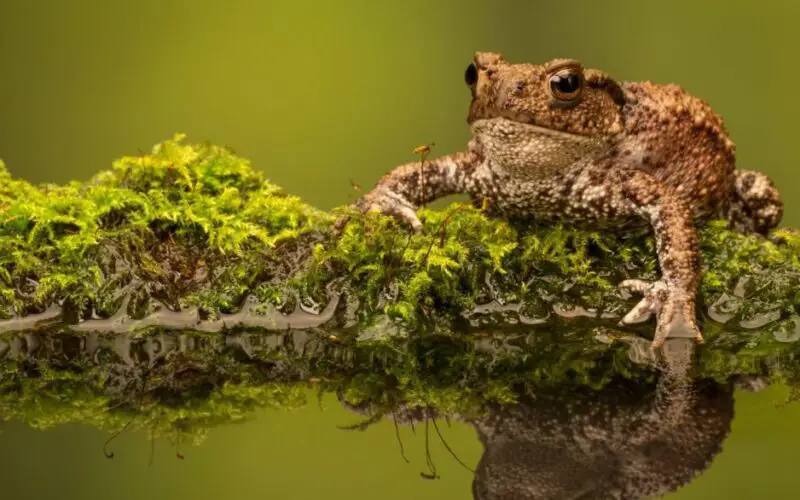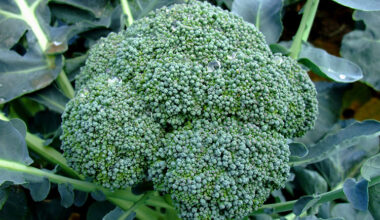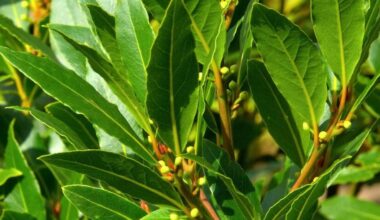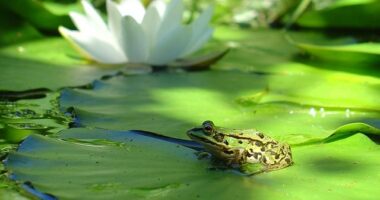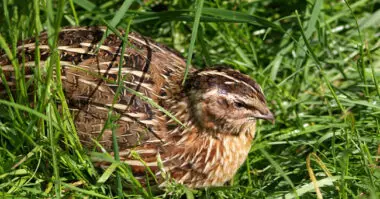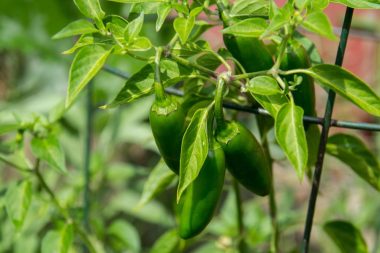Garden toads are auxiliary to agriculture. This means that they are useful in gardens. As soon as they reach adulthood, they feed on :
- slugs,
- spiders,
- insects,
- molluscs,
- lizards,
- earthworms,
- more rarely small frogs.
Contents
How to attract garden toads?
The toad is mobile and can move into your home if it finds coolness and shelter. The water point is not even essential, because it only goes there to reproduce (after hatching, the eggs – laid in ribbons – give birth to tadpoles), but it is a plus to avoid seeing it leave every year and perhaps not return if it finds a more pleasant place or if it meets a car along the way.
You can also build a habitat so that it feels comfortable in your garden.
Be aware that he likes the small, damp, dark places where he shelters during the day. To make a shelter for him, you can use :
some large stones;
some bark slabs;
a stoneware pot, preferably made of sandstone, which you just have to turn over;
small planks of untreated wood.
Choose the solution that suits you best and make a toad shelter with an opening of about 5 cm. The toad will then be able to come and go as it pleases and will be able to fulfill its role as a natural insecticide in your garden.
Why do you need to have toads in your garden?
The toad feeds mainly on lizards, insects, beetles, caterpillars, earthworms and sowbugs. It also eliminates flies and gnats, ants and spiders. Finally, it is very fond of slugs and snails capable of wreaking havoc on young salad plants and flowering plants. This amphibian from our nature area is therefore a real ally in the garden because it acts as a natural insecticide.
We should not hesitate to do everything possible to make it feel good and not be tempted to go and see elsewhere. Indeed, it is better to take advantage of the help of toads to save its plantations against the snail attack rather than resorting to an anti-slug that is toxic to the environment.
For example, you can create a small pond and toad shelters with a few stones, old wooden planks, various bark plates or a few terracotta flower pots that you put down in the air so that the toad can shelter there. It is always necessary to make sure that only untreated shelters are made available to the batrachian, and to allow him to slip into them thanks to a small opening of 4 or 5 cm at the most. Of course, the toad is noisy during the mating season, so it may be wise to set up the toad’s shelters at a distance from the house.
If you see one or more toads in your garden, it is very important not to use dangerous treatments such as insecticides, anti-mosses, and chemical fertilizers in the orchard, vegetable or ornamental garden. Toads are very sensitive to these toxic products and can be killed by them. Beware also of the sharp propeller of the mower that can mash a careless toad hidden in the tall grass!
The toad is an animal that benefits from protection. In many countries more and more toads are being installed under railways, roads and highways. These eco-pipelines offer amphibians the possibility to move from one area to another while avoiding our different traffic networks. They can therefore take advantage of these ecological corridors at will, which will hopefully halt the decline of all these useful species.
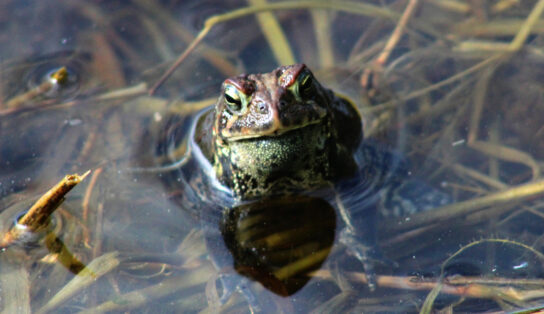
How do garden toads reproduce?
After these asphalt considerations, let’s get back to our toad. The males are in such a hurry to find a mate that they can cling to as many as ten on a female who may perish drowned under the burden. We can sometimes observe dead females being ripped open due to the power of the forearms of the first male clutching tighter and tighter while other suitors clutched at their turn.
Speaking of reproduction, let us point out that the female is capable of laying about 8000 eggs arranged in double gelatinous cords clinging to aquatic plants. The tadpoles, which live in a gregarious way, are easily recognized by their modest size (3cm) and their black color, so they gather in bands near the surface and at the edge of water points where the temperature is higher. Most of them will perish from predator attacks (aquatic insect larvae, newts, fish), or unfavorable conditions (pollution, drying out) and only 1% of them will produce an adult capable of producing offspring. The fighter’s course is particularly selective for all toads and frogs.
The “toad rains” as it was once called are due to the massive emergence of young after heavy rains. As soon as the metamorphosis takes place, usually at the end of June, they take refuge in small crevices in the ground or under stones and plant debris. They will then lead all their life a terrestrial existence (except for laying eggs), twilight and night. The toad is home-dwelling, seems to know its hunting territory very well and in principle always returns to the same refuge, year after year.
Summary
The common toad is a toad that deserves more consideration than it is given. Behind this appearance, which many of us find unattractive, lies a precious ally for all gardeners. As soon as the toad has reached adulthood, it feeds on a large quantity of small insects, such as slugs, spiders, lizards, earthworms!
